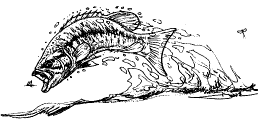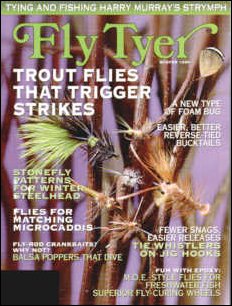
Check it Out

Headwaters:
a fish and angling art show
Here is a great selection of Hunting & Fishing magazines.
With 1200 Magazines to choose from you just can't go wrong
Help support this site by supporting our affiliates
All intellectual property and Pictures Copyright© of Robert Morger 1999. No reproductions of any material on this site is permitted without the express permission of the owner. All rights reserved.
The Onelist logo is a copyright of Onelist,Inc Copyright © 1998-1999, ONElist, Inc. All Rights
Reserved.
If you have suggestions or questions please contact rmorger@juno.com
Powered by counter.bloke.com
Tri-Ant

| Tri-Ant Gene Holowachuk (geneh@telenet.net) The Tri-Ant is probably the most successful ant pattern I have fished anywhere. For example, the East/West Branches of the Delaware River, West Canada Creek in the east, or the Yellowstone River, Bitterroot River, etc.,in the west. This fly can bring big fish up when other dry flies fail, and it works well in still water. The secret to the Tri-Ant probably lies in its three body segments with the large rear body segment curving back half way over the bend of the hook, its smallest middle segment and a front segment slightly smaller than the rear segment. The hackle is tied in sparsely between the segments and is neatly clipped top and bottom to leave only side hackle. I have also tied the Tri-Ant using reddish-brown closed cell foam and found it quite successful as well. This pattern was first described in "The Angler's Journal, Volume 2, No.3, Spring 1996". Hook: Mustad 94840 or Tiemco 100, size 12-20. 1. Wrap black thread the length of the hook from the eye to the midway point of the
curve. Attach foam strip at mid curve point and wrap thread up over the curve to the point
where the curve becomes straight (above the barb). I like to fish the Tri-Ant high and dry, dead drift, down stream. Most of my success on tail waters or spring creeks is with size 14-18. For the swap I have tied size 14. I believe everyone will experience the same success as I have with the Tri-Ant. Tight lines and screaming reels, Gene. |

